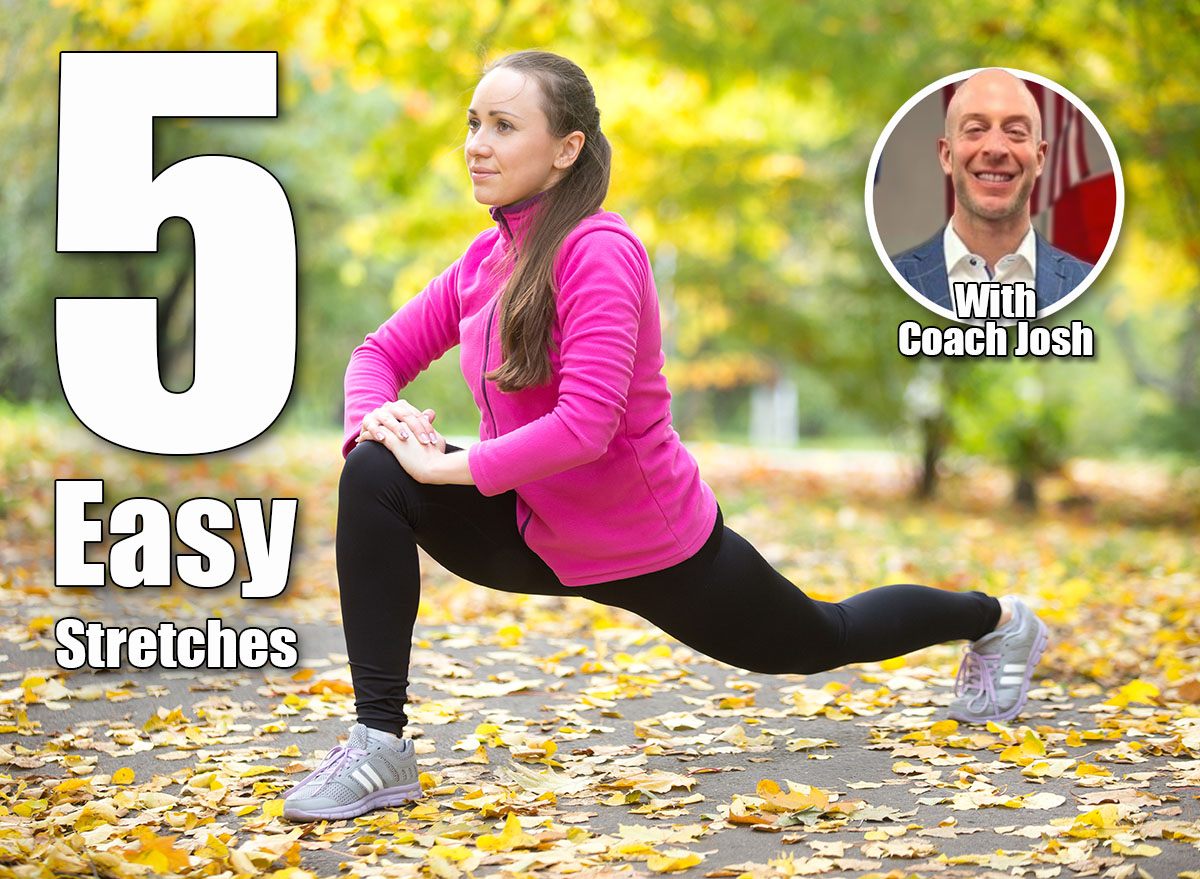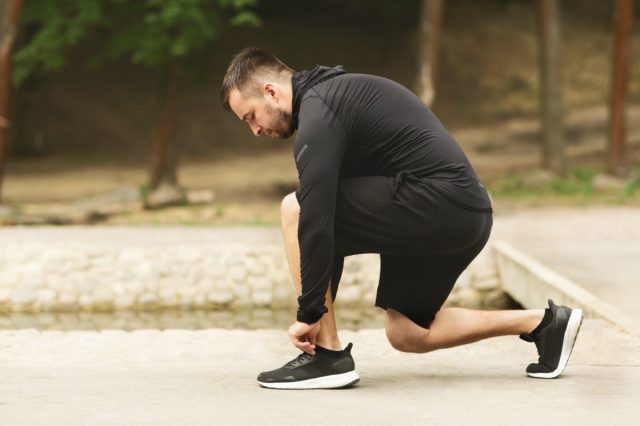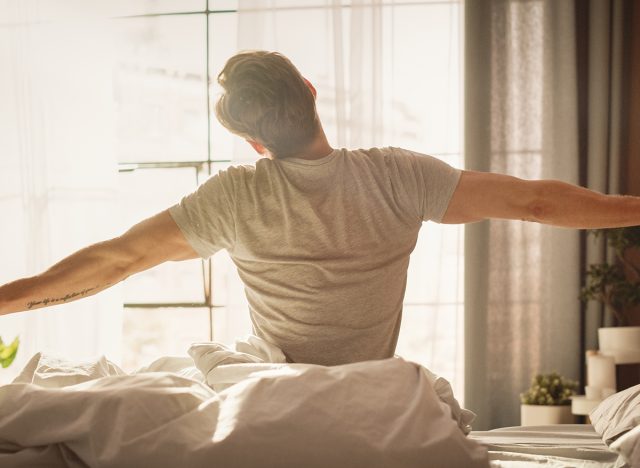5 Driveway Stretches That Reverse Stiffness Better Than Massage Therapy After 50

If you’re over 50, you know that familiar feeling of waking up stiff or struggling to get comfortable after sitting for too long. Your body isn’t moving the way it used to, and simple tasks can leave you feeling tight and achy. The good news is that you don’t need expensive massage therapy sessions or complicated gym routines to feel better. These five simple driveway stretches can help you reclaim your flexibility and reduce stiffness in just minutes a day.
Why Your Driveway Is Perfect for Beating Stiffness

People over 50 experience increased stiffness as their bodies age. Some specific areas of stiffness that I see most often include hip and hip flexor stiffness, lower and upper back, and shoulder and neck stiffness. This can be due to prolonged sitting, posture changes, inactivity and decreased mobility.
Simple stretches done consistently can be extremely effective for long-term stiffness relief. They can help stimulate synovial fluid production which lubricates joints, improve circulation by bringing oxygen and nutrients to tight muscles, help to reset your posture after sitting, and activate underused muscles. Even 5-10 minutes of daily stretching can improve flexibility and reduce stiffness.
The driveway is an ideal location for these stretches because it is convenient, right outside your door, flat and firm which is perfect for stable stretching, and allows you to get outside and be exposed to necessary Vitamin D. Here are the five stretches that will help you reclaim your flexibility and reduce stiffness.
5 Driveway Stretches That Reverse Stiffness After 50
Standing Hip Flexor Stretch
Why This Works: It counteracts hip flexor tightening due to prolonged sitting. It also improves pelvic alignment to support a healthy spine and posture.
How to do it:
- Standing with your feet hip-width apart, step your right foot back into a lunge.
- Tuck your pelvis like you’re scooping your tailbone under, and lean slightly forward until you feel a stretch in your right hip.
- For a deepened stretch, raise your right arm overhead and hold.
- Switch sides and repeat.
How Often and How Long: This stretch should be done 2-3 times a day, held on each side for about 30 seconds.
For Beginners: For an easier version, rest your back knee on a cushion or folded towel.
Mistakes to Avoid: Try to avoid arching your lower back or letting your front knee go past your toes.
Standing Hamstring Stretch
Why This Works: It loosens tight hamstrings that pull on your lower back.
How to do it:
- Standing along a curb or a step, elevate one heel along the curb or step.
- Keeping your leg straight and your toes pointed up, hinge at the hips and lean forward.
- Hold, then switch.
How Often and How Long: This stretch should be done 1-2 times daily, held on each side for about 30 seconds.
For Beginners: For an easier version, bend your knee that is not on the step or curb slightly.
Mistakes to Avoid: Try to avoid bouncing or rounding your upper back.
Driveway Shoulder Openers
Why This Works: It opens tight shoulders and chest which can be caused by slouching and prolonged sitting. It also reduces neck/upper back tension.
How to do it:
- Standing facing your car or a porch railing, place your hands shoulder-width apart on the surface with your arms straight.
- Step back, hinging at your hips and let your chest drop down toward the ground.
- Keeping your spine neutral and your ears between your arms, hold the stretch across your shoulders, upper back, and chest.
How Often and How Long: This stretch should be done 1-2 times daily, held for 30 seconds.
For Beginners: For an easier version, place your hands on a higher surface and keep your knees slightly bent.
Mistakes to Avoid: Try to avoid arching your lower back too much or bringing your shoulders up by your ears.
Standing Cat-Cow
Why This Works: It mobilizes the spine and improves coordination.
How to do it:
- Standing with your feet hip-width apart and your knees slightly bent, place your hands on your thighs.
- Inhale and arch your back gently, raising your chest to the sky for a cow position.
- Exhale and round your spine, pulling your belly in and your chin towards your chest for a cat position.
- Match your breath to each motion.
How Often and How Long: This stretch should be done 1-2 times daily with 8-10 slow reps each.
For Beginners: For an easier version, sit down on a sturdy chair or step.
Mistakes to Avoid: Try to avoid rushing the movements, holding your breath, or letting your knees lock.
Knee-to-Chest Stretches
Why This Works: It resets your spine, relieving tension and pain in the lower back and hips.
How to do it:
- Lying flat on the driveway with your arms stretched up by your ears, bring your right knee towards your chest.
- Bring your arms down to hug your knee into your body.
- Return to the starting position, then switch sides.
How Often and How Long: This stretch should be done 1-2 times daily, ideally in the morning and before bed, for 30 seconds on each side.
For Beginners: For an easier version, limit the distance you pull your knee towards your chest, or use a cushion to support your legs.
Mistakes to Avoid: Try to avoid lifting your back or butt off the floor.
When to Do These Stretches and What to Expect

These stretches should be done in the morning and before bed to loosen up stiffness from sleeping and throughout the day, and to set a positive tone for movement and sleep. Natural light exposure first thing in the morning is also great for improved mood and sleep schedules. However, consistency is key – morning, midday, or evening, as long as you are getting these stretches in and taking the time to better your body, you’ll feel the benefits.
Within one week, you should feel noticeably looser, especially in your hips and back. As you continue to consistently stretch, you’ll notice fewer aches during daily tasks and a greater sense of control over your body and aging process.
Looking for easy ways to lose fat? Here’s How Long Your Walking Workout Should Be To Shrink Belly Fat.